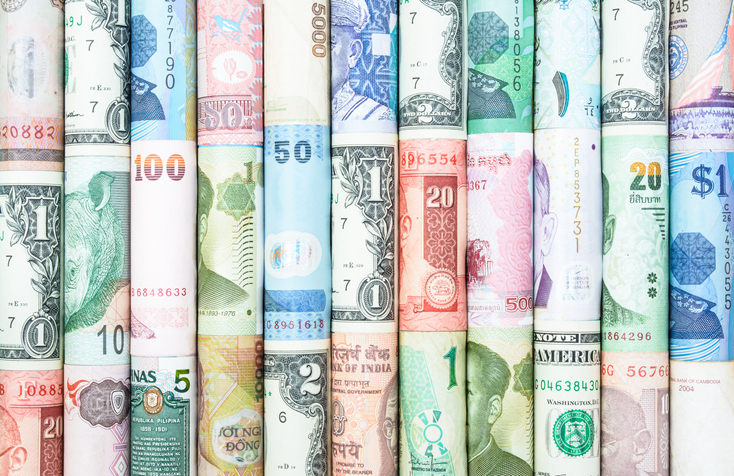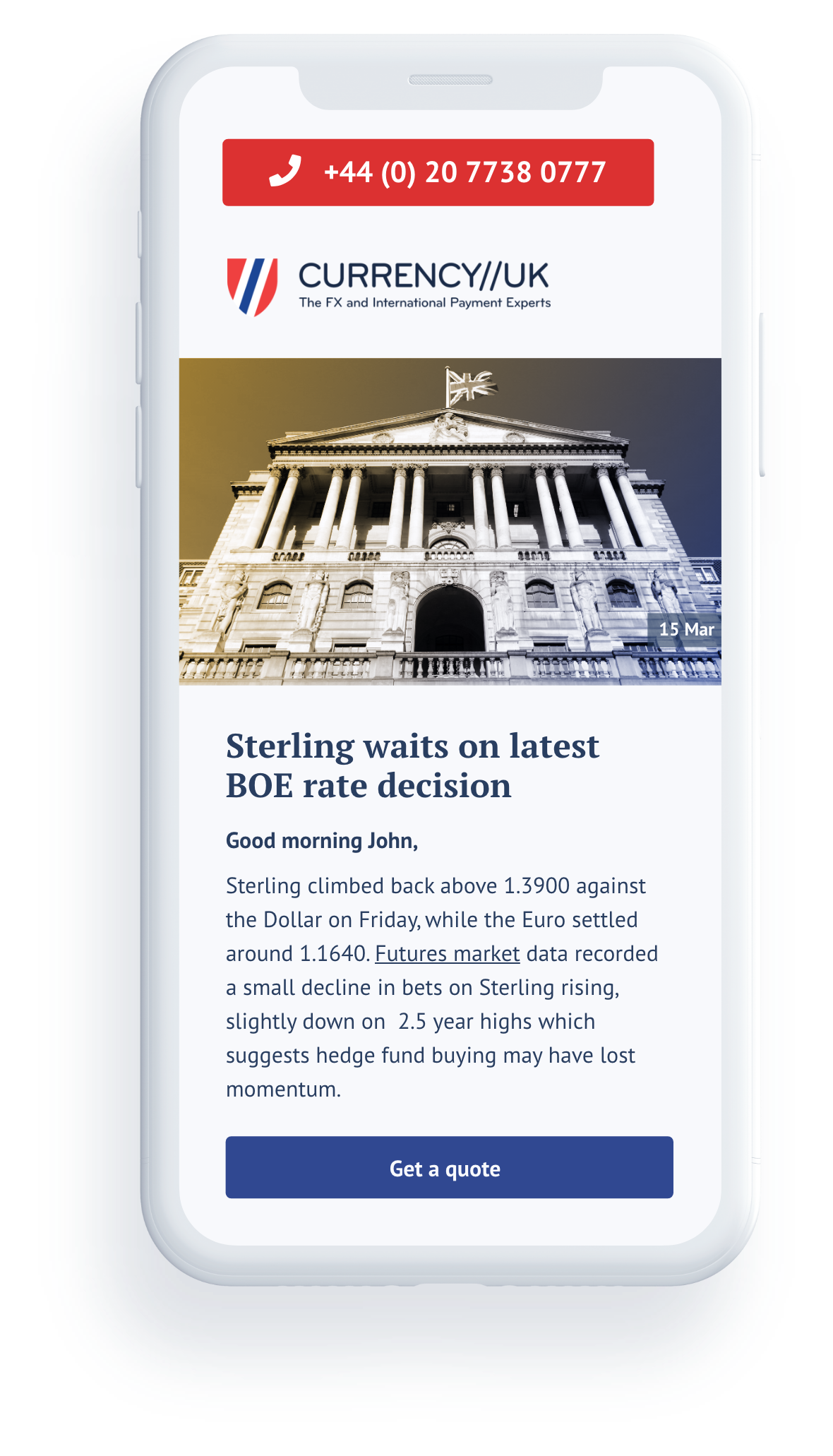State of play in the currency market

Find out how the major currencies are performing and what movement we could see in weeks and months ahead.
GBP
The initial announcement of a Brexit deal was undermined by the limited amount of the UK economy covered, ie 80% of GDP is services that are not yet included. Although the Pound rose it wasn’t as much as we’d have hoped for. As we embark on our Brexit adventure in 2021 the uncertainty of the new trading arrangements and logistics should dissipate over time. As the uncertainty lifts the Pound should also be able to drift upwards across the board but the impact may only start to become apparent in Q2 of 2020. Also, there are high hopes that the global economy will rebound this year as vaccinations are rolled out across the globe allowing easier travel and trade. There is of course no guarantee that the vaccines will be a silver bullet and therefore unexpected hiccups and lockdowns will negatively impact the Pound.
If reassurances are needed for this year, there can’t be another comparable coronavirus financial markets disaster as we currently have a “pandemic plan” in action which can be adapted, and we can’t Brexit again in the near future.
USD
USD forecasts anticipate that the theme of a weakening dollar will continue well into 2021 as the global economy strengthens. In recent months, US dollar news has been dominated by how the major currency has weakened substantially against the euro and the pound. As a rule of thumb, USD forecasts usually anticipate that the greenback will gain strength during times of crisis, Covid-19 being a perfect example. When investors get nervous as economic turmoil looms, they flock to the dollar for safety.
The US dollar outlook has now been undermined by positive developments in the race for a coronavirus vaccine. Countries around the world have approved jabs manufactured by the likes of Pfizer/BioNtech, Oxford University/AstraZeneca, and Moderna. Aggressive rollout programmes have now begun in the UK and US. As a result, there is widespread optimism that punishing lockdowns will be able to end at some point in 2021, and economic activity will start to return to normal once the most vulnerable in society have been immunised.
In a recent report, ING said that US dollar news had suffered a number of unhelpful diversions over the past three years. Protectionist policies enforced by Donald Trump, which led to trade tensions with China, didn’t help matters. The direction of the forex markets was also disproportionately swayed by the coronavirus pandemic.
Setting out its USD forecast for 2021, ING analysts revealed that they believe the dollar will continue to decline this year – and that it could lose up to 10 percent of its value against most major fiat currencies.
EUR
The Euro-zone economy should recover in 2021 and confidence in the single currency will be boosted by the agreement on the recovery fund. Goldman Sachs has forecasted a Euro-to-Dollar rate at 1.28 at the end of 2021.
The ECB is also expected to maintain a very accommodative monetary policy with interest rates set to remain at 0.0% while the central bank extends its emergency PEPP bond-buying programme until 2022. If the Euro-zone economy strengthens sharply, there will be pressure on the ECB to tighten policy, but there are still important risks that the economy will be unable to gain significant momentum.
AUD
As the global economy reawakens following the rollout of covid vaccines and central banks across the globe maintain accommodative policy, the Australian Dollar should benefit according to a report produced by Goldman Sachs. The same report forecasts global commodity prices rallying, a trend that will likely benefit ‘commodity currencies’ such as the Australian Dollar.
CAD
The Canadian Dollar will strengthen in 2021 say analysts at Bank of America, driven by stronger investor inflows of capital and rising oil prices. However, the currency could still experience a challenging end to 2020 before it embarks on a more sustained trend of appreciation, owing to short-term challenges facing the domestic and global economy.
“Presently-low CAD risk premium appears inconsistent with the range of shorter-term challenges faced by the global economy, principally the surge virus infections against a backdrop of no new policy support,” says Ben Randol, a foreign exchange analyst at Bank of America (BofA).
Most economists and medical specialists are looking for vaccines to be deployed in a meaningful manner in major Western economies in the first quarter of 2021, which could ultimately provide support to equity markets and oil prices, creating the conditions supportive of a more sustained Canadian Dollar appreciation. Strong global growth is also a naturally supportive backdrop for the Canadian Dollar.
CHF
At this point, what the Swissie needs is a no-deal Brexit. As we’ve seen, over the course of the past months every piece of positive news, however minor, about the Brexit talks was enough to get the market excited about the pound. So any sort of deal, even a rudimentary one, will seem exciting enough to investors to rush out of the safe-haven franc.
MUFG Bank expects CHF to remain strong in 2021, in spite of the Covid-19 vaccine rollout and a UK-EU trade deal. In particular, the analysts expect the franc to grow in correlation with gold prices.
On the other hand, Credit Agricole sustains that the franc is heavily overvalued and that GBP could rally to 1.25 by December 2021. UBS goes even further with a GBP/CHF prediction of 1.30 to 1.40 for the pair in 12 months.
AED
The Emirati Dirham is considered to be one of the more stable currencies due to the fact it has been fixed at its current rate (3.6725) against the Dollar since 1997. However, the Dollar has struggled in recent months devaluing the Dirham on the global stage. The Dollar could make a recovery throughout 2021 as the short-term effects of the pandemic begin to clear, but current political tension both internally and externally could see the Dollar struggle in the short-term, thus hampering the Emirati Dirham.
AED is also of course heavily influenced by oil prices, with 2020 being a particularly volatile year for the crude oil market, however prices have been on the rise since February. The likelihood is that oil companies will be trying to balance the demand by ensuring there isn’t an oversupply due to the continued effect of the pandemic on global travel. Again, as with many things as the world begins to open back up again, and the demand for oil increases, that will benefit AED.
ILS
The Israeli Shekel has been continuing to strengthen since its sudden drop in March last year and in early 2020 is at its highest level against the Dollar in more than 10 years. On the flip side, however, there are some other currencies where the Shekel has lost value when compared with early 2020, such as against the Euro.
It’s also worth looking out for Israel’s growing relationship with the Middle-East to continue throughout 2021 having agreed historic peace agreements with both the UAE and Bahrain in 2020.
With these countries ending their boycott, Israeli businesses will now be able to operate and trade in the region creating a much higher volume of Emirati Dirham to Shekel transfers. As a new currency pair grows in usage it is important to ensure that the increase in demand doesn’t result in unnecessarily overpaying for your foreign exchange.
ZAR
According to Investec, the South African Rand could rise significantly in 2021 when the coronavirus vaccine is expected to bolster the global economic recovery.
We expect markets to whipsaw over the next 12 months as global sentiment dithers between covid fears and vaccine hopes. The Pound-to-Rand rate is forecast by RMB to hold above 20.0 in 2021 and to end the year around 20.23.
NZD
2020’s negative interest rate talk depressed the Kiwi Dollar. Covid rollouts should benefit as the global economic reawakening drives demand for commodities. Strategists at Morgan Stanley have forecasted the Kiwi Dollar, another commodity currency, strengthening with rising prices and a higher probability of The Reserve Bank of New Zealand turning hawkish.
SEK
Scandinavian currencies are projected to make further gains against major currencies in 2021. The Swedish krona will be underpinned by the economic recovery while the currency is still seen by many as undervalued. Gains however are likely to be limited by the potential threat of a fresh Riksbank move to cut rates below zero.
Key events in 2021
Europe/EMEA
Mar – Germany – Elections in Baden-wuerttemberg and rhineland
Mar – Netherlands – National Elections
May – UK – Scottish parliamentary elections
August – Italy – White semester begins. Election cannot be called until Feb 2022
Sept – Russia – Parliamentary elections
Oct – Czech Republic – Parliamentary Elections
Autumn – Germany – Federal elections
Americas
Q1 – US – Senate confirmation hearings on Joe Biden’s cabinet choices
1H – US – US fiscal stimulus announced of the order of $1 trillion
April – Peru – General elections
July – Mexico – Midterm Legislative elections
Nov – US – Guber-national elections in New Jersey and Virginia
Nov – Chile – General elections
Asia
Mar – Australia – Western Australia state elections
Mar – China – Two session meetings
April – India – Various state elections
April – Japan – By-elections for vacant seats
July – Taiwan – Central Budget Plan
Aug – Australia – House of Representatives and half Senate election
Aug – Malaysia – Sarawak state election
Sept – Thailand – 2022 budget
Oct – Japan – Election of house representatives
Oct – Malaysia – 2022 budget
Oct – Japan – By-elections for vacant seats
Nov – Hong Kong – Policy address

